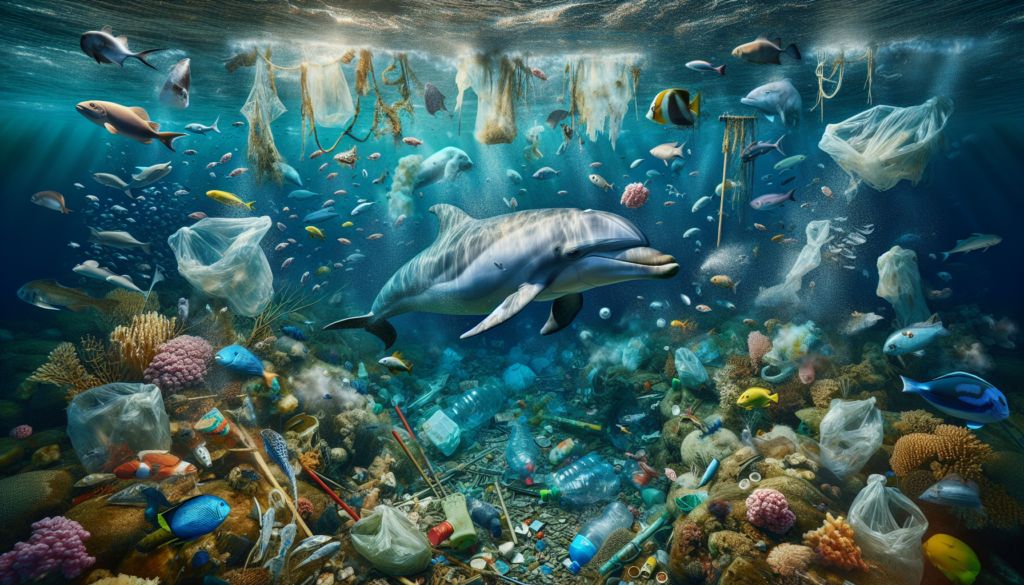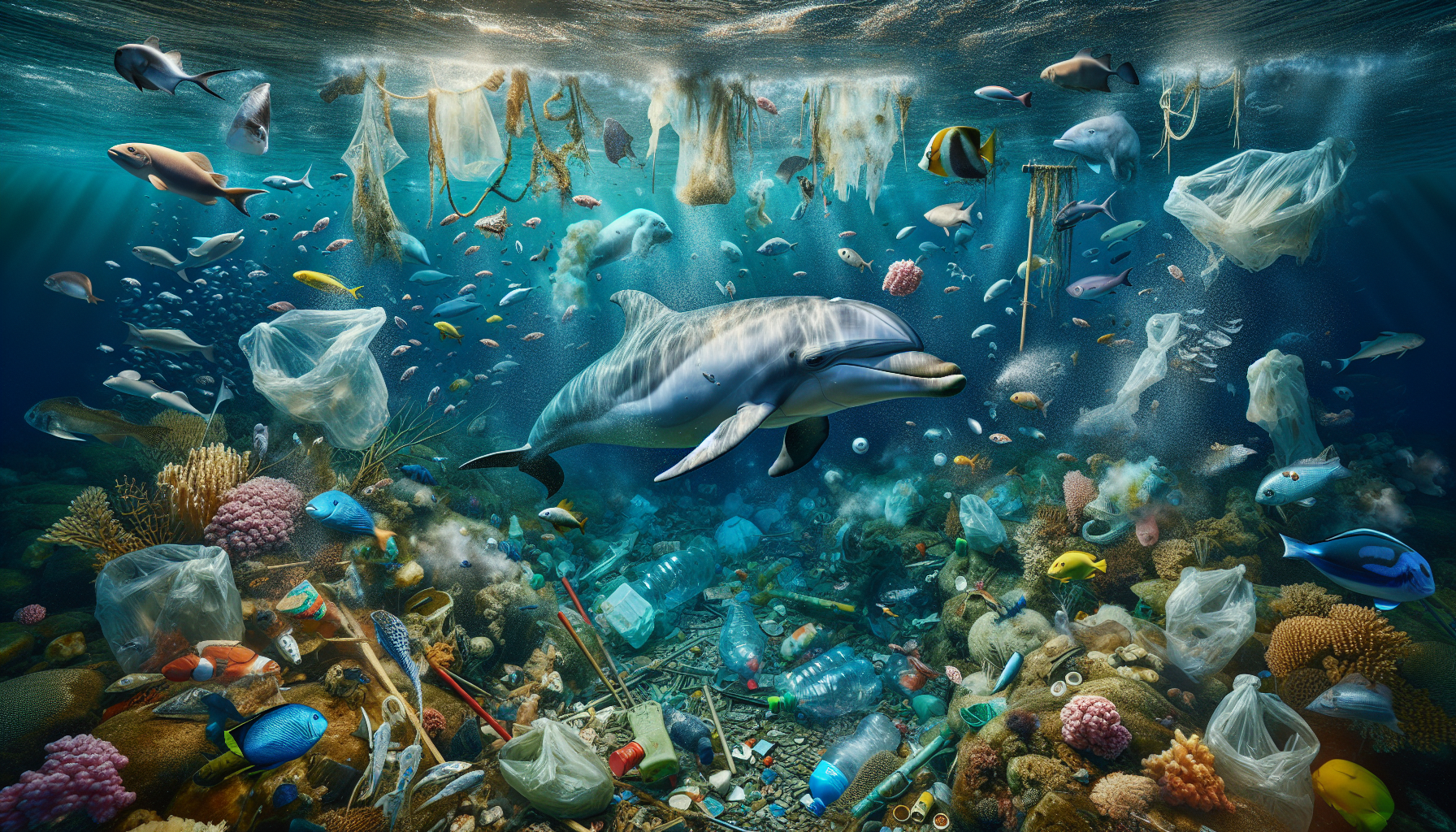You are about to uncover the alarming effects of ocean pollution on marine life. From the depths of the ocean to the vibrant ecosystems that exist within it, the detrimental consequences of pollution are vast and far-reaching. This article will shed light on the impact of various pollutants on marine species, habitats, and the delicate balance of life beneath the waves. Brace yourself for an eye-opening exploration of how our actions are affecting the very creatures that call the ocean home.
Introduction to Ocean Pollution
Welcome to this comprehensive article on ocean pollution and its effects on marine life. In this article, we will explore the definition and causes of ocean pollution, as well as delve into the various types of contamination that exist in our oceans. We will also delve into the impacts of ocean pollution on marine biodiversity and ecosystems, as well as the consequences for marine wildlife and the economy. By understanding the gravity of this issue, we can work towards finding effective solutions to mitigate and prevent further damage to our precious oceans.
Definition and Causes of Ocean Pollution
Ocean pollution refers to the contamination of the Earth’s oceans and seas with harmful substances or pollutants. These pollutants can originate from numerous sources, both human-made and natural. Human activities such as industrial discharges, careless waste disposal, oil spills, coastal development, and improper agricultural practices are major contributors to ocean pollution. Additionally, natural processes such as volcanic eruptions and marine algae blooms can also result in pollution. It is essential to identify these causes to understand the steps we can take to address and reduce ocean pollution.

Effects of Ocean Pollution on Marine Life
Ocean pollution has far-reaching consequences on the delicate ecosystems that exist within our oceans. It affects marine life in various ways, including physical, chemical, and biological contamination.
Physical Contamination of the Ocean
Physical contamination refers to the presence of solid waste and debris in the ocean.
Plastic Pollution
Plastic pollution is a significant contributor to physical contamination in our oceans. Plastic products, such as bottles, bags, and microplastics, find their way into the water, where they pose a significant threat to marine life. Animals like sea turtles, dolphins, and seabirds often mistake plastic debris for food, leading to injury or even death.
Debris and Trash Accumulation
Aside from plastics, other forms of debris like fishing nets, abandoned vessels, and discarded equipment also accumulate in the ocean. This debris can entangle marine animals, inhibiting their movement, feeding, and breeding. It also poses risks to ships and boats, resulting in accidents and damage to marine ecosystems.
Oil Spills
Oil spills, whether from tanker accidents or offshore drilling operations, have devastating effects on marine life. The oil contaminates the water and coats the feathers or fur of marine animals, impairing their ability to maintain body temperature and causing them to drown or succumb to hypothermia. Moreover, oil spills can damage vital habitats such as coral reefs, mangrove forests, and seagrass meadows.
Chemical Contamination of the Ocean
Chemical contamination refers to the introduction of hazardous substances into the marine environment.
Heavy Metals
Heavy metals, including mercury, lead, and arsenic, find their way into the ocean through various industrial processes and human activities. These toxic metals accumulate in the tissues of marine organisms, posing health risks to both animal and human populations that rely on seafood as a significant protein source.
Nutrient Pollution
Excessive agricultural runoff and improper waste disposal can lead to nutrient pollution in the ocean. Excess nutrients, such as nitrogen and phosphorus, promote the growth of harmful algal blooms, depleting oxygen levels and creating dead zones. These dead zones lead to mass fish kills and disrupt the delicate balance of marine ecosystems.
Toxins and Pesticides
Toxins and pesticides, including chemical fertilizers and herbicides, make their way into the ocean through runoff and domestic wastewater discharge. These substances pose a threat to marine organisms and can accumulate in the food chain, ultimately reaching humans who consume contaminated seafood.
Biological Contamination of the Ocean
Biological contamination refers to the introduction of pathogens, diseases, and harmful algal blooms into the ocean.
Oxygen Depletion and Dead Zones
Nutrient pollution triggers the growth of harmful algal blooms, which consume large amounts of oxygen from the water. This process leads to oxygen depletion and the formation of dead zones, where many marine organisms cannot survive. The creation of dead zones disrupts the natural balance of ecosystems, causing population declines and habitat degradation.
Harmful Algal Blooms
Harmful algal blooms, or HABs, occur when certain species of algae grow rapidly and produce toxic substances. These toxins have detrimental effects on marine life, leading to the death of fish, shellfish, and other organisms. HABs also pose risks to human health, as shellfish contaminated with toxins can cause food poisoning or even fatalities if consumed.
Pathogens and Diseases
Pathogens and diseases can be introduced into the ocean through sewage and agricultural runoff, as well as from infected animals. These pathogens can harm or even kill marine organisms, leading to population declines and disruptions in the natural balance of marine ecosystems.
Stay tuned for the second part of this article, where we will explore the impacts of ocean pollution on marine biodiversity, ecosystems, and wildlife. We will delve into the threats faced by marine species, the disruption of food chains, and the loss of habitats. Together, we can raise awareness about this critical issue and work towards finding solutions to protect our fragile oceans.

